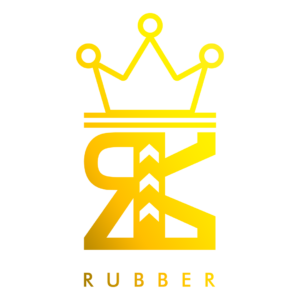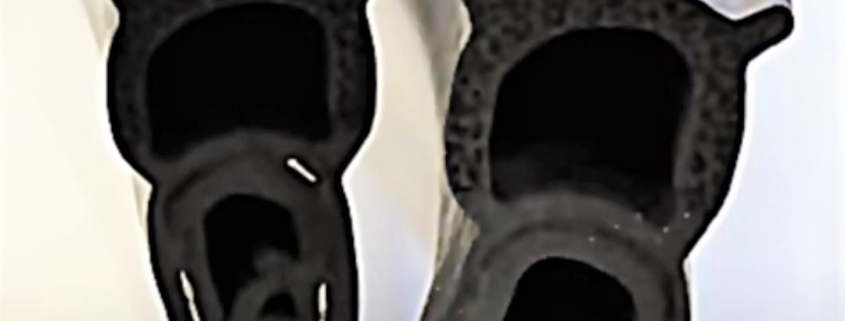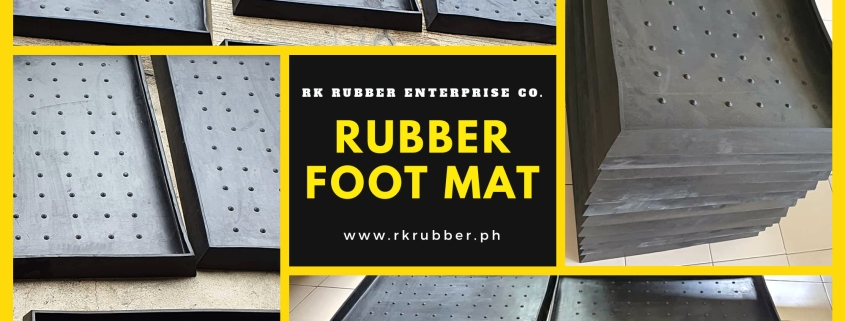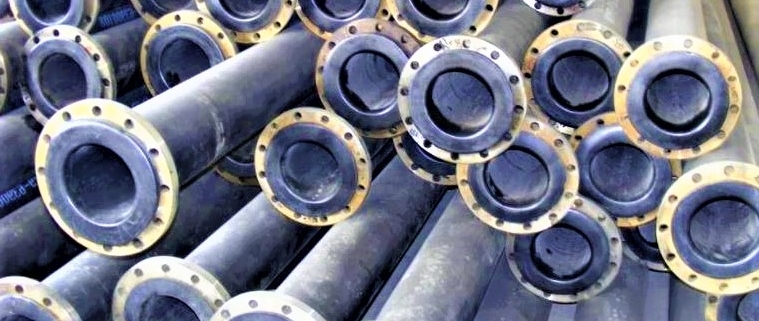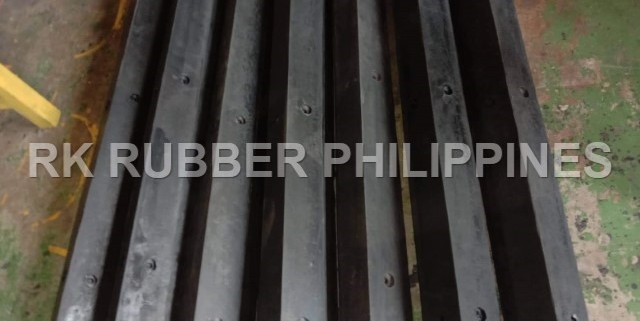Rubber Profile
Rubber Profile Manufacturer and Supplier in the Philippines
RK Rubber Enterprise Co. is a well-known rubber profile manufacturer and supplier in the Philippines. We cater to various industries such as mechanical engineering, residential, commercial, aerospace, automotive, marine, industrial, and agriculture. Rubber profiles have a long history and are now essential for sealing windows, doors, and other openings to reduce noise and vibration. Our precise manufacturing process includes mixing, extrusion, cooling, cutting, and value-adds to ensure reliable and versatile rubber profiles. We offer various profiles in sponge-type, solid-type, hybrid, and co-extruded variants in different shapes, sizes, and colors. Our rubber profiles are trusted by industries throughout the Philippines due to their excellent elasticity, smooth finish, easy installation, and cost-effectiveness.
Key Takeaways
- Have a long history and were originally used on horse-drawn carriages and later on automobiles.
- The manufacturing process involves weighing and mixing raw materials, extruding the compound through a die, cooling, and cutting to size.
- Different types are available, including sponge-type, solid-type, hybrid, and co-extruded profiles.
- Rubber profiles have various features, such as reducing noise and vibration, exhibiting excellent elasticity, and being easy to install and replace.
Manufacturing Process
The manufacturing process of rubber profiles at RK Rubber Enterprise Co. involves a precise and efficient production method. Extrusion techniques are utilized to ensure the highest quality. This involves weighing and mixing raw materials to create the desired compound, which is then fed into an extruder. The compound is heated and pushed through a die, resulting in the formation of the rubber profile. Quality control measures are implemented throughout the process to ensure the profiles meet the required specifications.
Once it is extruded, it is cooled and cut to the desired size using cutting and sizing methods. This ensures that the profiles are uniform and ready for use. In addition to these basic manufacturing steps, RK Rubber Enterprise Co. also offers value-added services. These may include adding sealants or adhesive tapes to the profiles to enhance their functionality.
Furthermore, RK Rubber Enterprise Co. values distributor partnerships, as they are crucial in delivering the finished rubber profiles to customers. These partnerships enable the company to reach a wider audience and ensure timely delivery of the products. By adhering to strict manufacturing processes and quality control measures and offering value-added services, RK Rubber Enterprise Co. can produce high-quality rubber profiles that meet the needs of various industries.
Types of Rubber Profiles Available
There are various types available for different applications. Here are three main types:
- Sponge-type rubber profiles: These profiles are made from soft rubber and are designed to seal gaps between surfaces. They provide excellent compression and flexibility, making them suitable for tight sealing applications. They are commonly used in doors, windows, and automotive applications.
- Solid-type rubber profiles: These profiles are versatile and reliable, making them suitable for various applications. They are made from solid rubber and resist weathering, chemicals, and UV radiation. They are commonly used in the construction, manufacturing, and transportation industries.
- Hybrid-type rubber profiles: These profiles are designed to resist noise and vibration. They are made from a combination of sponge and solid rubber, providing the benefits of both types. They are commonly used in sound and vibration isolation applications, such as buildings, machinery, and vehicles.
When it comes to advantages, rubber profiles offer several benefits. They are easy to install and replace, making them cost-effective. They significantly reduce noise and vibration, providing a quieter and more comfortable environment. Additionally, profiles have a smooth finish, ensuring a better seal.
Regarding customization options, it can be manufactured in different shapes, sizes, and colors to meet specific needs. They can also be customized with additional features, such as adhesive backing or metal inserts, for easier installation and enhanced durability.
Compared to other sealing methods, these are preferred for their flexibility, durability, and ability to provide a secure and reliable seal. They offer better resistance to weathering, chemicals, and UV radiation than other materials like plastic or metal.
Regular maintenance is recommended to ensure the longevity of rubber profiles. This includes cleaning the profiles regularly to remove dirt and debris and inspecting them for any signs of wear or damage. Prompt replacement of worn or damaged profiles is essential to maintain their effectiveness.
Key Features
It possess distinct characteristics that make them suitable for various applications. One of the critical advantages of the profiles is their durability. They are designed to withstand harsh conditions, such as extreme temperatures, moisture, and UV exposure. This makes them ideal for outdoor and industrial use.
In terms of the installation process, rubber profiles are easy to install and replace, saving time and effort. They can be easily cut to the desired length and attached using adhesive or mechanical fasteners. Their flexibility allows them to conform to irregular shapes and surfaces, ensuring a secure fit.
Rubber profiles also offer customization options. They are available in various shapes, sizes, and colors to meet specific requirements. This allows for seamless integration into different applications, whether sealing windows and doors, reducing noise and vibration, or providing insulation.
Additionally, rubber profiles have low maintenance requirements. They are resistant to corrosion, chemicals, and wear, resulting in longer service life. Regular cleaning with mild soap and water is usually sufficient to keep them in good condition.
Different Applications
Rubber profiles find applications in various industries and sectors, serving as essential components in various mechanical, residential, commercial, and industrial applications. They offer numerous advantages, such as excellent sealing properties, noise and vibration reduction, and easy installation and replacement. Here are some industry-specific uses of rubber profiles:
- Automotive Industry: It is widely used in the automotive industry for sealing windows, doors, and other openings. They help prevent noise, dust, and water from entering the vehicle, ensuring a comfortable and quiet ride.
- Construction Industry: Play a crucial role in the construction industry, particularly in installing windows and doors. They provide a tight seal, preventing air and water infiltration and enhancing building energy efficiency.
- Manufacturing Industry: Various manufacturing processes use rubber profiles to provide insulation, cushioning, and protection. They are commonly used in machinery, equipment, and conveyor systems to reduce noise and vibration, ensuring smooth operation and worker safety.
Proper installation and regular maintenance are essential to ensure optimal performance and longevity. Installation tips include providing a clean and dry surface, using appropriate adhesives or fasteners, and following manufacturer guidelines. Maintenance guidelines may involve regularly inspecting, cleaning, and replacing damaged or worn-out profiles.
Materials Used
One of the key considerations in producing the profiles is the selection of suitable materials for their manufacturing process. Two commonly used materials for rubber profiles are EPDM (ethylene propylene diene monomer) and natural rubber. EPDM profiles offer excellent resistance to weathering, ozone, and UV radiation, making them ideal for outdoor applications such as window seals and automotive weatherstrips. On the other hand, natural rubber provides good flexibility and high tear strength, making it suitable for applications that require durability and elasticity, such as gaskets and seals.
When comparing the manufacturing processes of rubber profiles and plastic profiles, it is evident that they differ significantly. Profiles are typically produced through an extrusion process where the rubber compound is fed into an extruder, heated, and pushed through a die to form the desired profile shape. Plastic profiles, on the other hand, are usually formed through an injection molding process where molten plastic is injected into a mold cavity and cooled to solidify.
Solid-type rubber profiles have distinct advantages over sponge-type profiles. Solid profiles provide better sealing capabilities due to their denser composition, making them more effective in preventing air, water, and dust passage. They also offer higher resistance to compression and deformation, making them suitable for applications that require long-term durability and stability.
Color variations in rubber profiles can have an impact on both aesthetics and functionality. Different colors can be used to differentiate between different profiles or to match the overall design scheme of a product. However, it is important to note that color additives may affect the physical properties of the rubber, such as its UV or temperature resistance. Therefore, careful consideration should be given to the selection of color additives to ensure that the desired aesthetics are achieved without compromising functionality.
In the automotive industry, hybrid rubber profiles are gaining popularity due to their ability to resist noise and vibration. These profiles are often used in applications such as engine mounts, suspension bushings, and door seals, where they help to reduce noise and vibration levels, resulting in a smoother and more comfortable driving experience. Hybrid profiles typically combine different rubber materials, such as EPDM and natural rubber, to provide the desired balance of properties.
Color Variations in Rubber Profiles
The color options for rubber profiles in different applications vary based on specific requirements. Here are three key points to consider regarding color variations in rubber profiles:
- Advantages of Color Customization:
- Color customization allows it to blend seamlessly with the surrounding environment, enhancing aesthetics.
- It enables easy identification and differentiation of profiles in complex systems, simplifying maintenance and replacement.
- Color coding can indicate specific functions or safety measures, improving operational efficiency and safety compliance.
- Durability and Color Retention:
- They are typically available in black, a common color that provides good UV resistance and prevents discoloration.
- However, custom colors can also be achieved without compromising durability by using pigments specifically formulated for rubber.
- These pigments are designed to withstand prolonged exposure to harsh weather conditions, chemicals, and mechanical stress, ensuring long-lasting color retention.
- Impact on Sealing Efficiency and Installation Methods:
- Does not directly affect their sealing efficiency. The material’s properties and design primarily determine it.
- However, color variations can indirectly impact installation methods, as some colors may require specific handling or adhesive application techniques.
- It is important to consult with the manufacturer or supplier to ensure proper installation procedures are followed for optimal sealing performance.
About RK Rubber Enterprise Co.: Leading Rubber Profile Manufacturer in the Philippines
RK Rubber Enterprise Co. is a leading manufacturer of rubber profiles in the Philippines, serving various industries for over a decade. As a trusted supplier, they offer a wide range of rubber profiles designed to meet the specific needs of different applications.
One of the advantages of rubber profiles is their versatility and reliability. They can be custom-made to fit any shape or size, allowing for seamless integration into various projects. This customization option ensures that the rubber profiles provide a perfect seal, reducing noise, dust, and vibration.
Quality assurance is a top priority at RK Rubber Enterprise Co. They use high-quality materials, such as EPDM, Viton, natural rubber, synthetic rubber, and SBR, to ensure the durability and longevity of their rubber profiles. Additionally, their manufacturing process follows strict quality control measures to guarantee consistent and reliable products.
When it comes to installation, RK Rubber Enterprise Co. provides helpful tips to ensure a successful and hassle-free process. They recommend thoroughly cleaning the surface before installation to ensure proper adhesion. Additionally, proper alignment and application of pressure are crucial for a secure and effective seal.
Frequently Asked Questions
What Are the Different Types of Rubber Profiles Available for Specific Applications?
There are three main types of rubber profiles: sponge-type, solid-type, and hybrid. Sponge-type profiles seal gaps, solid-type profiles are versatile, and hybrid profiles resist noise and vibration. Choose the right profile based on your specific application needs. Regular maintenance and proper care will ensure the longevity of rubber profiles.
Can Rubber Profiles Be Customized to Meet Specific Size and Shape Requirements?
It can be customized to meet specific size and shape requirements. This involves the manufacturing process of rubber profiles, which includes weighing and mixing raw materials, extruding and cutting the profiles, and adding value-adds. Customizing rubber profiles offers benefits such as better sealing, noise and vibration reduction, and suitability for various industries. However, challenges such as complexity and cost may arise in designing and producing custom profiles. Comparatively, custom rubber profiles can be more cost-effective in the long run due to their precise fit and enhanced performance.
Are Rubber Profiles Suitable for Outdoor Applications and Resistant to Weather Conditions?
They are suitable for outdoor applications and are resistant to weather conditions. Their durability and weather resistance make them effective in various weather conditions, ensuring their longevity outdoors.
What Are the Advantages of Using Rubber Profiles Over Other Sealing Materials?
Rubber profiles offer durability, cost-effectiveness, noise reduction, chemical resistance, and easy installation. They are superior to other sealing materials because they can withstand various conditions and provide efficient sealing solutions.
How Long Do Rubber Profiles Typically Last, and Are They Easily Replaceable?
Rubber profiles typically last for a long time, but their lifespan can be affected by various factors such as temperature and environmental conditions. However, they are easily replaceable, and regular maintenance can help extend their durability.
Conclusion
In conclusion, RK Rubber Enterprise Co. is a leading rubber profile manufacturer and supplier in the Philippines. With a rich history and a commitment to providing high-quality products, they offer a wide range of rubber profiles that meet the diverse needs of various industries. Their manufacturing process ensures the production of reliable and versatile profiles, and their rubber profiles are trusted for their excellent elasticity, smooth finish, easy installation, and cost-effectiveness.
